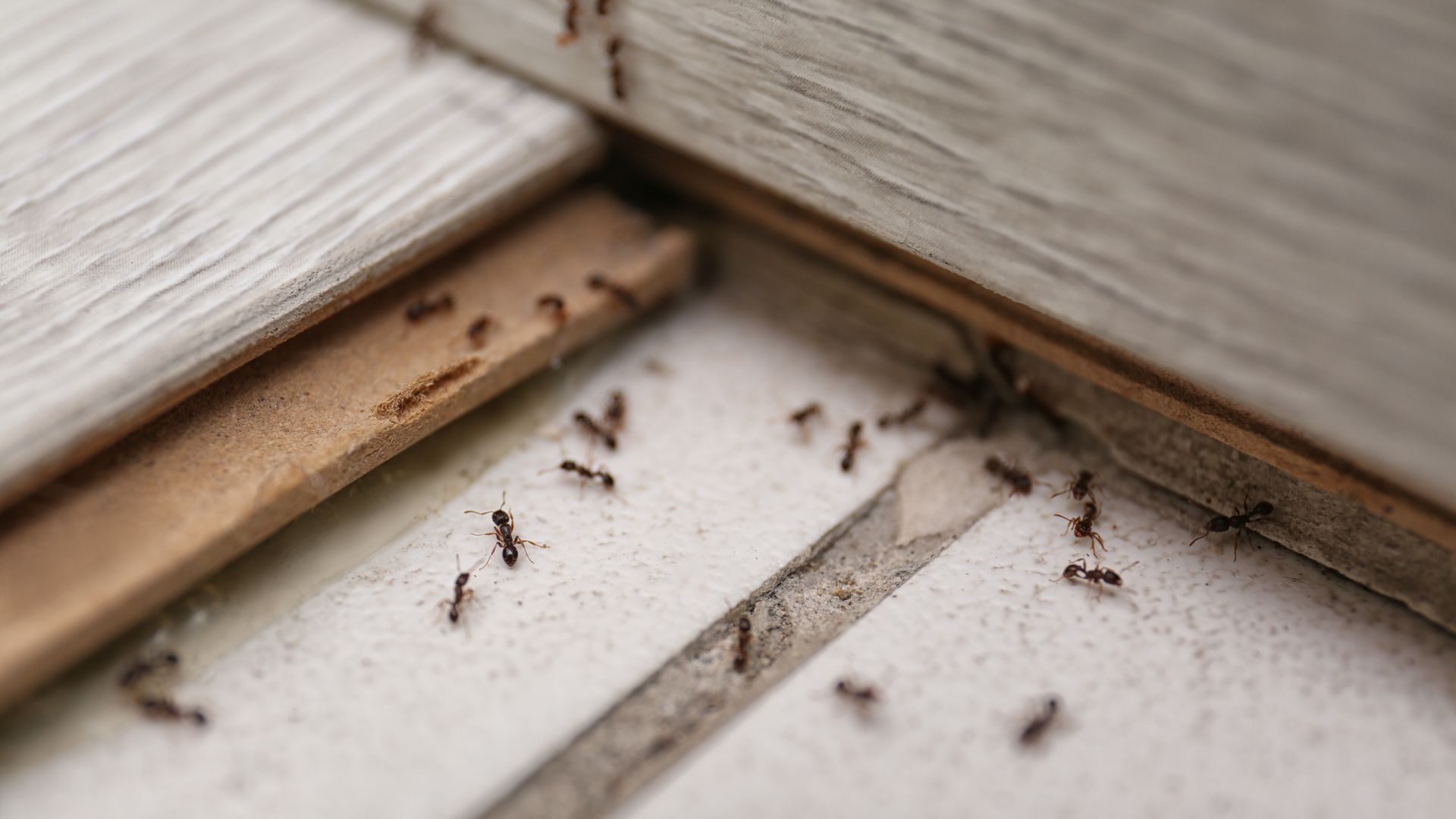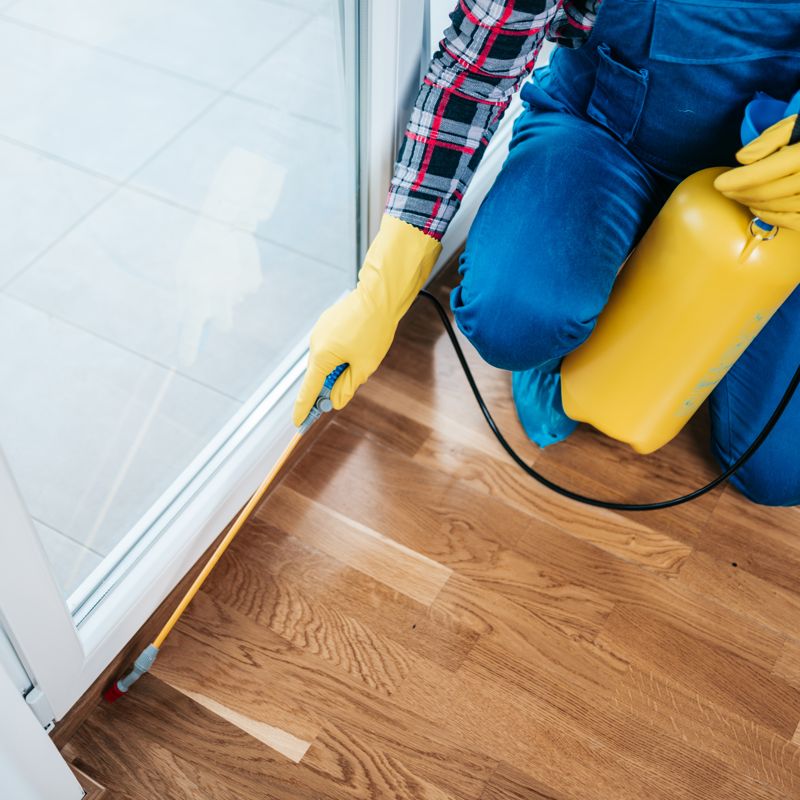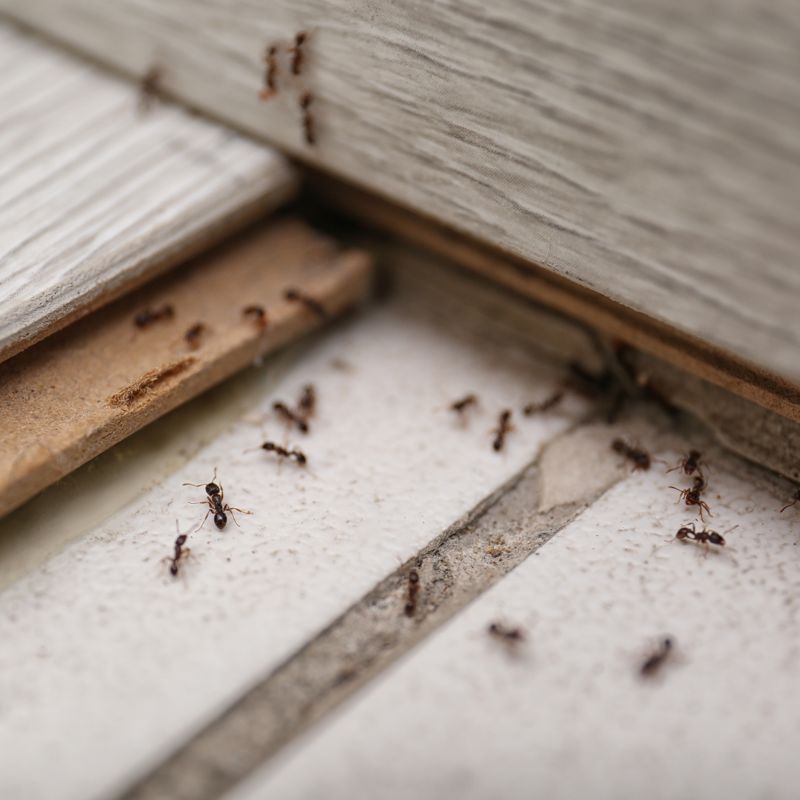
Help! There Are So Many Rats On My Long Island Property
Two basic desires for most people are to have a home and to feel secure. For most, it takes years of savings to purchase a house, and once you get your home, you want to feel protected. So, we place locks on doors and windows and install security cameras and video doorbells to keep intruders from entering the house. If it is financially feasible, we build a fence around our property as an additional layer of security to create another barrier against intruders.
Because we take steps to protect ourselves, anything or anyone that trespasses is an intrusion and puts us on high alert. So, when we notice a rat running across the lawn or hear scratching sounds underneath our feet, our sense of security is shattered. The good news is that the Long Island pest control team from A&M Quality Pest Control will remove rats from your property.
Our technicians have more than ten years of pest control experience; they have the tools and knowledge to stop rats from infesting your house. We take the time to listen to your concerns to provide you with the best service possible and peace of mind. The following information will give you the signs of a rat infestation, why they are dangerous, and what you can do to deter them from living on your property.
Clear Signs Of Rats In Your House
Although there are many rat species, Norway rats, also known as brown rats, are problematic for Long Island homeowners. These mammals have brown, coarse fur intermingled with black hairs and a white underside. Norway rats have a thick, heavy 7 to 9 1/2-inch long body, a 6 to 9-inch scaly tail, small eyes, naked ears, and a blunt muzzle.
Rats are active at night while you sleep; during the day, they hide in cabinets, wall voids, under appliances, and dark, secluded areas to avoid detection. Although the rats may be hiding during the day, that does not mean you cannot find signs of rats in the house. If you suspect rats are inside your home, look for these indications:
- Gnaw marks: Rats are rodents, and a distinguishing feature of rodents is a pair of upper and lower constantly growing incisor teeth. Unless rats trim their teeth, they will grow about four inches annually and eventually keep them from eating. So, to keep the teeth under control, rats continually gnaw on materials like wood, metal, plastic, and concrete. Look for chew marks on plastic storage containers, wires, furniture, cabinet corners, walls, and aluminum.
- Holes: Because rats have large incisor teeth, they can chew through wood and drywall to create two to three-inch circular holes. Look for these openings near the floor and in the walls.
- Droppings: Norway rats weigh up to one pound and eat the equivalent of one-third of their body weight daily. As with all living creatures, rats produce feces, and Norway rats leave a considerable output of about 25,000 droppings annually! Fecal matter produced by rats is shaped like rod-shaped pellets, about the size of an olive pit, and is shiny black. Look in kitchen cabinets, drawers, underneath appliances, and the pantry for rat droppings.
- Urine stains: Mice do not usually require additional water outside of what they obtain through their food, but rats need water to survive. Norway rats consume around one ounce of water daily and almost always create nests near food and water sources. Rats release the water as urine and stain floors and objects while traveling throughout the house. Use a blacklight to search for urine stains in areas where you suspect an infestation.
- Greasy marks: Rats and mice have oily fur that attracts dirt and grim. Because they forage in garbage, drains, sewers, and other unsanitary locations, their coat is saturated with soil. Rats have poor eyesight and constantly bump their dirty fur against walls and objects; as a result, rats leave dark smudge marks. Investigate along baseboards, around corners, and suspected rat holes for black streaks.
- Tracks: Like every creature with feet, rats leave four and five-toed prints visible in dusty areas. Sprinkle talcum powder in areas you suspect are infested and wait a few days to see if tracks appear.
- Food: Mice tend to nibble on various foods, but rats eat until satisfied in one sitting. However, they occasionally take shells and food back to the nest and accidentally drop them along the way.
- Odor: Since rats don't talk, they use pheromones to communicate. These chemical communicators are in their urine. A noticeable musty aroma will be present if there is a large infestation in an area of the house.
- Runways: Mice are adventuresome, but rats are creatures of habit. Once rats find food, they create a nest no more than 150 feet away and travel the same path to and from the source. Droppings, grease marks, urine stains, tracks, and uneaten food indicate a pathway.
- Nests: Rats use shredded paper, cloth, and insulation to build a place to raise their young and sleep during the day. Look for four to six-inch loosely wound balls of material in walls, under appliances and insulation, in the garage, basement, crawlspace, and attic.
If you see these signs of a rat infestation in your Long Island house, you need help promptly from A&M Quality Pest Control.
Although there are many rat species, Norway rats, also known as brown rats, are problematic for Long Island homeowners. These mammals have brown, coarse fur intermingled with black hairs and a white underside. Norway rats have a thick, heavy 7 to 9 1/2-inch long body, a 6 to 9-inch scaly tail, small eyes, naked ears, and a blunt muzzle.
Rats are active at night while you sleep; during the day, they hide in cabinets, wall voids, under appliances, and dark, secluded areas to avoid detection. Although the rats may be hiding during the day, that does not mean you cannot find signs of rats in the house. If you suspect rats are inside your home, look for these indications:
- Gnaw marks: Rats are rodents, and a distinguishing feature of rodents is a pair of upper and lower constantly growing incisor teeth. Unless rats trim their teeth, they will grow about four inches annually and eventually keep them from eating. So, to keep the teeth under control, rats continually gnaw on materials like wood, metal, plastic, and concrete. Look for chew marks on plastic storage containers, wires, furniture, cabinet corners, walls, and aluminum.
- Holes: Because rats have large incisor teeth, they can chew through wood and drywall to create two to three-inch circular holes. Look for these openings near the floor and in the walls.
- Droppings: Norway rats weigh up to one pound and eat the equivalent of one-third of their body weight daily. As with all living creatures, rats produce feces, and Norway rats leave a considerable output of about 25,000 droppings annually! Fecal matter produced by rats is shaped like rod-shaped pellets, about the size of an olive pit, and is shiny black. Look in kitchen cabinets, drawers, underneath appliances, and the pantry for rat droppings.
- Urine stains: Mice do not usually require additional water outside of what they obtain through their food, but rats need water to survive. Norway rats consume around one ounce of water daily and almost always create nests near food and water sources. Rats release the water as urine and stain floors and objects while traveling throughout the house. Use a blacklight to search for urine stains in areas where you suspect an infestation.
- Greasy marks: Rats and mice have oily fur that attracts dirt and grim. Because they forage in garbage, drains, sewers, and other unsanitary locations, their coat is saturated with soil. Rats have poor eyesight and constantly bump their dirty fur against walls and objects; as a result, rats leave dark smudge marks. Investigate along baseboards, around corners, and suspected rat holes for black streaks.
- Tracks: Like every creature with feet, rats leave four and five-toed prints visible in dusty areas. Sprinkle talcum powder in areas you suspect are infested and wait a few days to see if tracks appear.
- Food: Mice tend to nibble on various foods, but rats eat until satisfied in one sitting. However, they occasionally take shells and food back to the nest and accidentally drop them along the way.
- Odor: Since rats don't talk, they use pheromones to communicate. These chemical communicators are in their urine. A noticeable musty aroma will be present if there is a large infestation in an area of the house.
- Runways: Mice are adventuresome, but rats are creatures of habit. Once rats find food, they create a nest no more than 150 feet away and travel the same path to and from the source. Droppings, grease marks, urine stains, tracks, and uneaten food indicate a pathway.
- Nests: Rats use shredded paper, cloth, and insulation to build a place to raise their young and sleep during the day. Look for four to six-inch loosely wound balls of material in walls, under appliances and insulation, in the garage, basement, crawlspace, and attic.
If you see these signs of a rat infestation in your Long Island house, you need help promptly from A&M Quality Pest Control.
How Dangerous Is It To Have Rats In My House?
Innately, we know we should not share our house with rats! Living in the same space with a rodent that forages in rotting food, drains, and sewers are dangerous. As noted earlier, rats have oily fur that attracts dirt and grime but also draws bacteria onto the rodents as they move around in filthy locations.
Leptospirosis, rat-bite fever, tularemia, and salmonellosis are examples of the bacterial diseases rats carry. When these dirty creatures enter Long Island homes, they bring bacteria with them that cause these infections that produce fever, headaches, joint and muscle pain or swelling, and vomiting, which in some cases, may lead to hospitalization.
Norway rats spread these infectious organisms while traveling throughout the house and rubbing against surfaces. Droppings, urine, and saliva are other ways rats transmit disease-causing organisms to humans. While you may initially notice the blunt, pellet-like dark droppings, as they dry and turn grey, they are not as noticeable. Also, when the feces dries, it begins to flake away, and the particles become airborne. Asthma attacks and allergic reactions are common in young children and the elderly that unwittingly inhale floating fecal matter.
Rats move around in kitchen drawers urinating on eating and serving utensils. In a few hours, the urine is dry and not readily visible, so an individual may unknowingly consume bacteria with their food.
In addition to the dirt and bacteria on a rat's fur, fleas, ticks, mites, and lice live inside the rat's coat. When rats enter a home with these hitchhiking insects, they jump off and search for a blood host. While the lice and mites irritate people, fleas and ticks can spread murine typhus, tapeworm, Lyme disease, Rocky Mountain spotted fever, and other infections depending upon the species and insect. In addition to flu-like symptoms, some diseases spread by fleas and ticks may cause brain and spinal cord swelling.
A&M Quality Pest Control provides rat control services to protect homeowners against diseases, asthma attacks, and allergic reactions caused by a rat infestation.
How To Remove Factors That Attract Rats To Your Home
Like all rodents, Norway rats come inside houses searching for food, water, and shelter, so if you want to prevent a rat problem, you need to remove the attractants.
A rodent infestation begins when rats find food on the property in open garbage cans, exposed compost piles, rotting fruit, and animal feces. Rats will stay on the property if there is a water source from a nearby ditch, puddle, baby pool, potted plant trays, etc. The final enticement for rats to reside around your house is wood and leaf piles, junk, overgrown vegetation, and other areas they can burrow underneath to create a home.
If you want to know how to get rid of mice and rats, it begins by removing outdoor attractants by doing the following:
Cover outdoor garbage cans and compost piles
Remove rotting fruit and animal feces
Eliminate water-collecting items
Provide drainage to ditches and low-lying areas
Clean up junk, leaf and wood piles, and overgrown vegetation
When a technician from A&M Quality Pest Control inspects your property, they can help identify additional ways to stop an infestation of rats in the backyard.

Why Choose A&M Quality Pest Control?
Quality Service, Every time
-
Emergency ServiceEmergencies don't wait, and neither should you. Contact us now!
-
Satisfaction GuaranteeWe'll make sure you're completely satisfied - it's our guarantee.
-
Same-Day HelpGet a pest professional out fast with our same-day appointments.
-
Insured Company
Have peace of mind knowing our team is fully licensed, insured, and vetted.
Our Reviews
Our Reputation Speaks for Itself
-
"Highly Recommend"
We had the foundation sprayed and also our old fence and deck and it really helped. Very reliable and very nice guys. Highly recommend!
- Doreen H. -
"Excellent Company"
I feel great knowing I can call them whenever an issue arises. Thank you guys so much! I'm so glad to have found such an excellent pest control company run by great people!
- AM S. -
"Excellent Service"
Excellent service, highly recommended. The tech was professional, punctual, and knowledgeable. Use these guys for all your pest control needs, you won't be disappointed.
- Collin C. -
"Loyal Customer"
I don't hope I have another pest problem, but if I do, I'm gettin' these guys to work their magic again!
- Dani A. -
"Great Results"
They’re always on time, they explain what the process is and they get results!! I highly recommend!!!
- Bryan B. -
"Highly Recommend"
It was a great experience and a great company, and I readily recommend it!
- Erica K. -
"10/10 Would Recommend"
I'd recommend them to anyone with a rodent problem. They were responsive, knowledgeable, and courteous all for a great price. Would recommend 10/10.
- Sam h. -
"Reasonable & Effective"
This year I decided to spray and my neighbor recommended Matt A & Pest Control. A & M Pest is reasonable in price and effective, this year the family has been able to enjoy the yard.
- Josh T.

